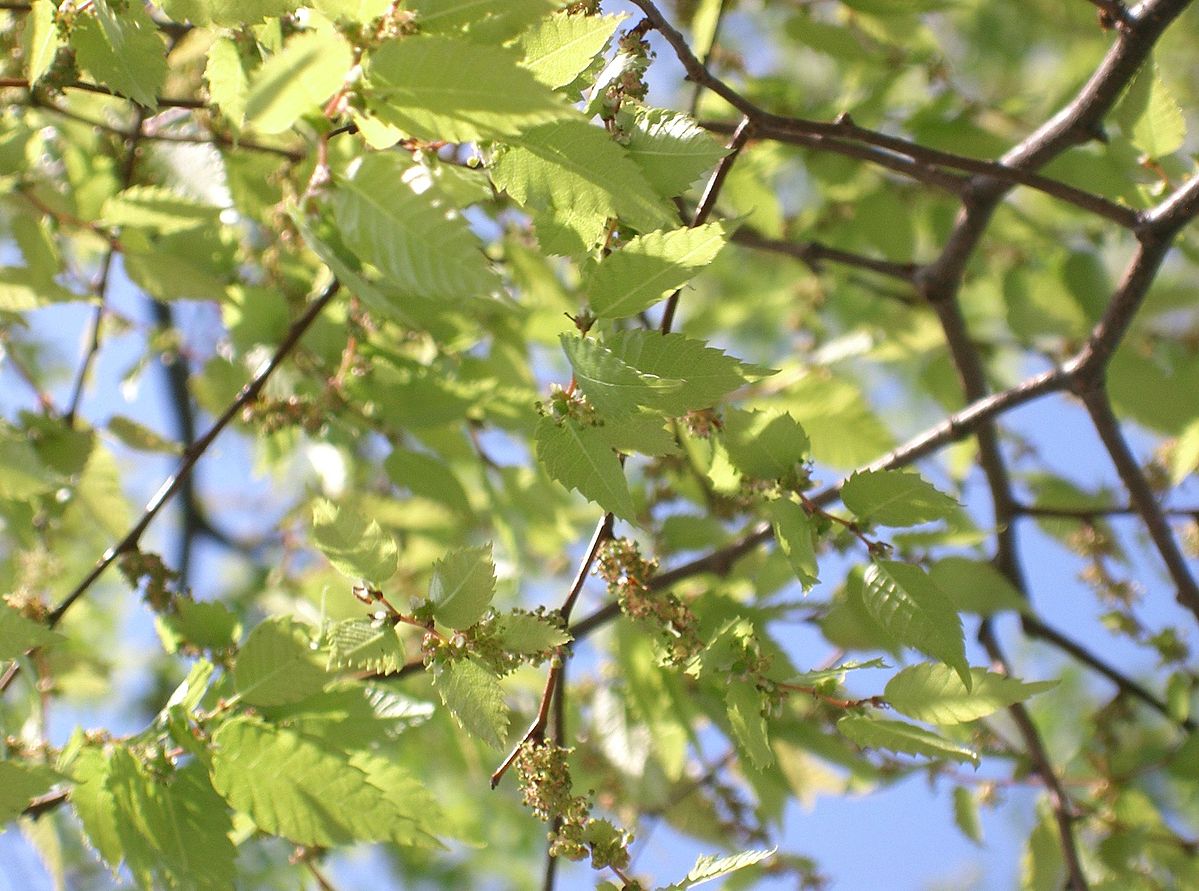
Quick Facts
- Plant Type: Rounded, spreading, deciduous tree
- Foliage type: Deciduous
- Tree height: 40–60 feet
- Tree width/spread: 40–60 feet
- Hardiness: USDA Zones 4 to 7
- Flower Color: Inconspicuous but attractive in mass
- Sun/light exposure: Full sun to part shade
- Water requirements: Tolerates a range of conditions
- Seasonal Interest: Rounded form, bark can add winter interest
Japanese Zelkova (Zelkova serrata)
Japanese Zelkova are native to Japan, Korea, Taiwan and Manchuria. There are several young Japanese Zelkova in the Arboretum and three magnificent old trees inside the wall along Victoria Avenue.
Dr. George Rogers Hall of Bristol, Rhode Island, had been an American doctor in China. After he retired he introduced a wide assortment of Asian plants, including Japanese Zelkova, to the United States beginning in 1862. About 1886, Frederick Law Olmsted, the Father of American landscape architecture, obtained several trees from Dr. Hall to plant on this property, including the three old Japanese Zelkova.
Today, the center tree is the largest Japanese Zelkova in Rhode Island, and probably in the United States. In 2015 it was 66-feet in height with an 86-foot crown spread and a 17-foot 8-inch trunk circumference. That year it was named the Helen Walker Raleigh State Champion Tree.
When Dutch Elm Disease devastated American’s finest street tree, the American Elm, upright forms of Japanese Zelkova was widely planted as a replacement. However, Japanese Zelkova must be properly trimmed when young and make a poor substitute for the dignified and graceful American Elm.
Japanese Zelkova develop peeling bark in old age, exposing orange patches of inner bark. Dark green leaves with serrated margins and a slightly rough texture turn yellow, copper, orange or deep red to purplish-red in fall, putting on a showy display.

